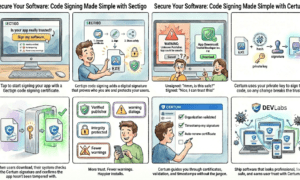Marketing often feels like a high-stakes guessing game, don’t you agree? Every day, you place bets on which ad will connect, which email will be opened, and which offer will convince a customer to click “buy.” We celebrate the wins, analyze the losses, and hope we’re getting smarter with each attempt, and it’s all great. But what if the answers you’re searching for aren’t out there, but are already sitting inside your business?
Inside your CRM is a story waiting to be read. It’s the story of every customer: their first click, their biggest purchase, their silent frustrations. It’s the blueprint for your future growth, showing you not just what happened yesterday, but what’s likely to happen tomorrow. This article is about turning that story into your strategy. We’ll show you how to stop guessing and start knowing, using the data you already have and a bit of AI to build a marketing engine that doesn’t just react, but anticipates.
First step: Know your customer for real
Before jumping into complex strategies, we need to get the basics right. This means getting all your customer information into one place so it tells a single, coherent story. This foundation is what makes effective digital marketing possible. It’s about creating a complete picture of who buys from you, moving beyond scattered data points to a unified view.
Assembling the customer journey puzzle
A customer’s relationship with your brand is spread across many places: your website, social media, emails, and support chats. To truly understand them, you have to connect these dots. The process starts by integrating your tools. Connect your e-commerce platform to your CRM, and every purchase gets logged to the customer’s profile. Link your website analytics, and you’ll see the pages they visited before deciding.
This unified view gives you the context that’s so often missing. Unifying data from your support channels is just as important. Every question a customer asks reveals their needs. Integrating these conversations, perhaps using a WhatsApp chatbot to capture these interactions, adds rich, qualitative data to each profile. This turns your CRM from a simple database into a story-driven record of each customer’s journey.
Beyond tracking what customers do, there’s immense value in what they willingly tell you. This “Zero-Party Data” is a goldmine. You can collect it with simple quizzes (“Which product is right for you?”), surveys, or preference centers in your sign-up forms. By asking about their interests, you get direct instructions on how to serve them better. You stop looking at isolated metrics and start seeing the full story.
Creating customer groups that make sense
Treating all customers the same is a huge missed opportunity. The key is to group them by behavior and value. A simple but powerful way to do this is with RFM analysis: Recency (When did they last buy?), Frequency (How often do they buy?), and Monetary value (How much do they spend?). This model helps you create practical segments like “Champions,” “At-Risk Customers,” and “Promising Newcomers.”
These segments allow you to tailor your messaging with precision. You wouldn’t send a welcome email to a loyal champion, and a loyalty offer doesn’t make sense for a first-time buyer. This is the first step toward a truly personal digital marketing strategy. It ensures every message is relevant to where that person is in their relationship with your brand.
The real power comes when these segments become dynamic. With AI, a customer can be moved from one group to another based on their actions. After a third purchase, a “Newcomer” might automatically become a “Loyal Customer,” triggering a new communication journey. You can also automate outreach on other platforms, for example, using Instagram DM automation to send a thank-you message to a new high-value customer. This approach makes your marketing feel responsive and personal.
AI in action: Let technology do the heavy lifting
With organized data and clear segments, you can use artificial intelligence to turn insights into action. This is where your CRM data fuels an engine that drives sales and loyalty, often on autopilot. AI helps you scale personalization in a way that’s impossible to do manually.
Creating conversations, not just campaigns
It’s time to ditch the “campaign blast” mindset and think in terms of continuous customer journeys. A campaign is a single event; a journey is an ongoing conversation. Think of it like a friendship. You don’t tell a friend the same story every time you see them; you pick up where you left off. A smart marketing journey does the same across all your channels.
This is where concepts like the “Next Best Offer” come in. Based on a customer’s history and the behavior of similar people, AI can predict the product or content most likely to interest them right now. This can be used to personalize an email or even your website’s homepage in real-time. Imagine a customer buys a camera. A week later, your system sends tips on how to use it. A few weeks after that, the AI identifies the perfect lens and shows them an ad for it. That’s an intelligent journey that feels helpful, not intrusive.
Looking ahead to make smarter decisions today
Perhaps the biggest advantage of AI is its ability to make predictions. This helps you invest your time and money where they’ll have the greatest impact. For example, predictive lead scoring analyzes a new lead’s behavior to score their likelihood to convert. The AI might learn that leads who download a specific guide and visit your pricing page are highly likely to buy, so your sales team knows to focus on them.
This foresight is invaluable. AI can even predict the lifetime value (LTV) of a new customer from their first few actions. This helps answer the crucial question: “How much can I afford to spend to acquire this of customer?” It can also help with proactive churn prevention. Instead of just flagging at-risk customers, AI often identifies why they’re at risk. If it finds that customers who open multiple support tickets in their first month are likely to leave, you can create a proactive intervention, like a personal call, to solve the problem before it’s too late.
A final thought: From reacting to anticipating
This is a fundamental shift in mindset: from a digital marketing strategy that reacts to one that anticipates. Your CRM is the fuel, and AI is the engine that turns that data into growth. This capability is no longer just for large corporations. With today’s tools, any entrepreneur can build this intelligence into their business. Here’s a challenge to get started: this week, use the RFM model to find your top 10% of customers. Then, think of one thing you can do to thank them and ensure they remain your biggest fans.































